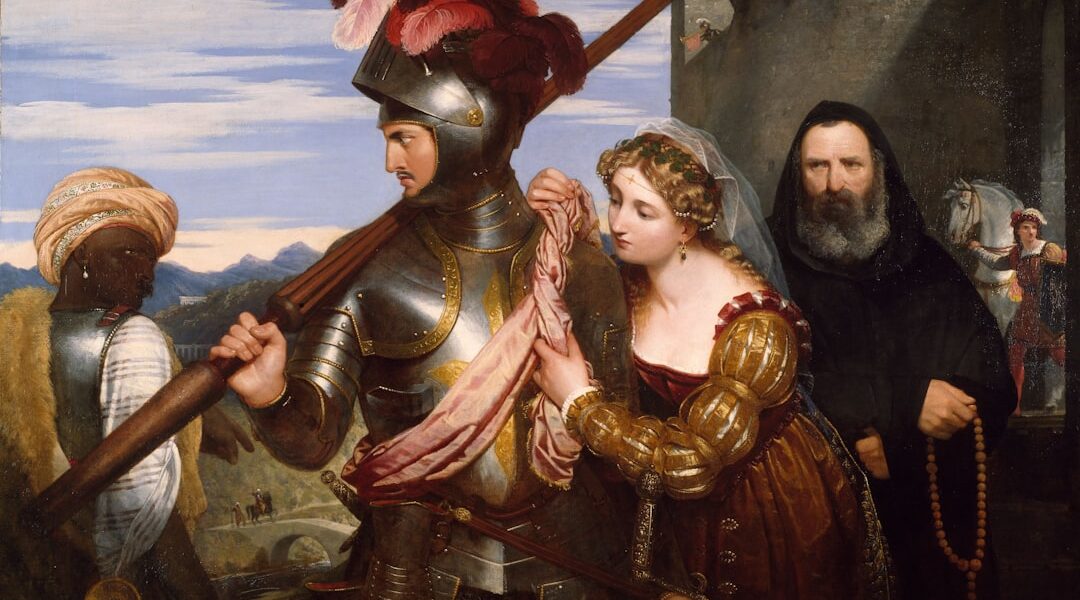In recent years, the fashion industry has witnessed a resurgence of classic tailoring and traditional silhouettes. This trend marks a return to the refined aesthetics and craftsmanship associated with historical sartorial practices, particularly those of the Renaissance era. The revival encompasses a wide range of garments, including precisely fitted suits, structured coats, and tailored jackets.
Classic silhouettes are designed to enhance the natural contours of the body, creating a refined and polished appearance. These tailored pieces are characterized by their ability to flatter various body types while maintaining a timeless and versatile appeal. Examples include well-fitted blazers, trousers with precise cuts, and meticulously tailored shirts.
The renewed interest in tailoring reflects a growing appreciation for skilled craftsmanship and attention to detail in clothing construction. This shift towards more structured and refined clothing styles represents a departure from the prevalence of fast fashion and casual wear. It signifies a cultural movement that values elegance and sophistication in dress.
By adopting tailored garments, consumers are not only making a fashion statement but also acknowledging the historical significance and heritage of classic menswear. This trend demonstrates a broader desire for quality and timelessness in fashion, contrasting with the often ephemeral nature of contemporary clothing trends.
Key Takeaways
- Tailoring is making a comeback with a focus on classic silhouettes and timeless elegance.
- Renaissance-inspired details are being incorporated into accessories for a touch of opulence and sophistication.
- Luxurious fabrics and embellishments are being embraced to add a sense of opulence to modern fashion.
- Historical patterns and prints from the Renaissance era are being modernized and incorporated into contemporary fashion.
- Historical garments such as doublets and ruffs are being reinterpreted for the modern man, adding a touch of Renaissance flair to modern fashion.
Accessorizing with Elegance: Incorporating Renaissance-inspired Details
The Opulence of Renaissance-Inspired Accessories
One of the key elements of Renaissance-inspired accessories is their ability to add a touch of opulence and grandeur to any outfit. Whether it’s a velvet embroidered scarf, a bejeweled brooch, or an intricately patterned pocket square, these accessories are designed to elevate the overall look and make a bold style statement.
A Sense of History and Sophistication
By incorporating Renaissance-inspired details into their accessories, men have the opportunity to infuse their outfits with a sense of history, artistry, and sophistication. This trend reflects a broader cultural fascination with the opulence and grandeur of the Renaissance era, which was marked by an unparalleled appreciation for beauty, art, and luxury.
Tapping into a Rich Cultural Heritage
By incorporating historical details into their accessories, men are able to tap into this rich cultural heritage and express their own appreciation for artistry and craftsmanship in their personal style. Whether it’s through the use of lavish fabrics, intricate craftsmanship, or opulent jewelry, Renaissance-inspired accessories offer men a unique way to express their individuality and showcase their sense of style.
Embracing Opulence: Luxurious Fabrics and Embellishments

In recent years, there has been a noticeable shift towards embracing opulent fabrics and embellishments in menswear, drawing inspiration from the luxurious textiles and ornate detailing of the Renaissance era. From sumptuous velvet and rich brocade to intricate embroidery and embellishments, designers have been incorporating these opulent elements into their collections, creating garments that exude luxury and grandeur. One of the defining characteristics of opulent fabrics is their ability to add depth, texture, and richness to any garment.
Whether it’s a velvet smoking jacket, a brocade waistcoat, or an embroidered evening coat, these luxurious fabrics have the power to elevate the overall look and create a sense of opulence and sophistication. By embracing these sumptuous textiles, men have the opportunity to infuse their wardrobes with a sense of luxury and refinement. In addition to opulent fabrics, designers have also been incorporating intricate embellishments and detailing into their collections, drawing inspiration from the ornate craftsmanship of the Renaissance era.
From elaborate embroidery and beading to intricate lacework and appliqué, these embellishments add a sense of artistry and craftsmanship to menswear, creating garments that are as visually stunning as they are luxurious. By embracing these opulent fabrics and embellishments, men are able to make a bold style statement and express their appreciation for artistry and craftsmanship in their personal style.
Modernizing Renaissance Prints: Incorporating Historical Patterns in Contemporary Fashion
| Print Name | Historical Pattern | Contemporary Fashion Item |
|---|---|---|
| Floral Tapestry | Renaissance floral motifs | Embroidered bomber jacket |
| Baroque Scrollwork | Baroque scroll patterns | Velvet evening gown |
| Chinoiserie Landscape | Chinoiserie landscape scenes | Silk kimono robe |
Another notable trend in contemporary menswear is the modernization of Renaissance prints and historical patterns. Designers have been drawing inspiration from the rich tapestries, intricate textiles, and ornate patterns of the Renaissance era to create garments that exude a sense of history, artistry, and sophistication. From elaborate damask prints to intricate floral motifs, these historical patterns have been reimagined and modernized for the modern man.
One of the key elements of modernized Renaissance prints is their ability to add visual interest and depth to any garment. Whether it’s a tailored jacket adorned with an intricate brocade pattern or a shirt featuring an elaborate tapestry print, these historical patterns have the power to elevate the overall look and create a sense of drama and opulence. By incorporating these prints into their collections, designers are able to infuse their garments with a sense of history and artistry while creating visually stunning pieces that make a bold style statement.
The modernization of Renaissance prints also reflects a broader cultural fascination with the art and aesthetics of the Renaissance era. From the intricate tapestries adorning the walls of palaces to the sumptuous textiles used in court attire, the Renaissance was a period marked by an unparalleled appreciation for beauty, art, and luxury. By incorporating these historical patterns into their collections, designers are able to tap into this rich cultural heritage and express their own appreciation for artistry and craftsmanship in their designs.
The Rise of Doublets and Ruffs: Reinterpreting Historical Garments for the Modern Man
In recent years, there has been a growing trend towards reinterpreting historical garments such as doublets and ruffs for the modern man. Designers have been drawing inspiration from the elaborate court attire of the Renaissance era to create contemporary versions of these iconic garments, infusing them with a sense of history, drama, and opulence. One of the key elements of reinterpreting historical garments is their ability to add a sense of drama and grandeur to any outfit.
Whether it’s a modernized doublet featuring intricate embroidery and embellishments or a ruff collar adorned with lacework and pleating, these historical garments have the power to elevate the overall look and create a sense of theatricality and opulence. By reinterpreting these iconic garments for the modern man, designers are able to infuse their collections with a sense of history and artistry while creating visually stunning pieces that make a bold style statement. The rise of doublets and ruffs also reflects a broader cultural fascination with the opulence and grandeur of the Renaissance era.
From the lavish court attire of the nobility to the intricate craftsmanship of artisanal guilds, the Renaissance was a period marked by an unparalleled appreciation for beauty, art, and luxury. By reinterpreting these historical garments for the modern man, designers are able to tap into this rich cultural heritage and express their own appreciation for artistry and craftsmanship in their designs.
Exploring Rich Color Palettes: Incorporating Jewel Tones and Regal Hues

The Power of Rich Colors
In contemporary menswear, there is a growing trend towards exploring rich color palettes, reminiscent of the Renaissance era. Designers are drawing inspiration from the regal hues and jewel tones of the past to create garments that exude luxury, sophistication, and drama. Rich color palettes have the ability to add depth, richness, and visual interest to any garment, making them a defining characteristic of opulent fashion.
Elevating the Look with Jewel Tones
Whether it’s a sumptuous velvet jacket in deep burgundy or a brocade waistcoat in regal emerald green, rich hues have the power to elevate the overall look and create a sense of opulence and grandeur. By incorporating these jewel tones into their collections, designers are able to infuse their garments with a sense of history and artistry, creating visually stunning pieces that make a bold style statement.
A Cultural Fascination with the Renaissance
The exploration of rich color palettes in menswear reflects a broader cultural fascination with the opulence and grandeur of the Renaissance era. From the sumptuous textiles used in court attire to the vibrant hues favored by artists such as Titian and Veronese, the Renaissance was a period marked by an unparalleled appreciation for color, beauty, and luxury. By tapping into this rich cultural heritage, designers are able to express their own appreciation for artistry and craftsmanship in their designs.
Reviving Renaissance Footwear: From Buckled Shoes to Embroidered Boots
In recent years, there has been a noticeable revival of Renaissance-inspired footwear in menswear, with designers drawing inspiration from historical styles such as buckled shoes and embroidered boots to create contemporary versions that exude elegance, sophistication, and opulence. One of the key elements of reviving Renaissance footwear is its ability to add a sense of history and drama to any outfit. Whether it’s a pair of buckled shoes adorned with intricate brocade patterns or embroidered boots featuring ornate detailing and embellishments, these historical footwear styles have the power to elevate the overall look and create a sense of grandeur and opulence.
By reviving these iconic footwear styles for the modern man, designers are able to infuse their collections with a sense of history and artistry while creating visually stunning pieces that make a bold style statement. The revival of Renaissance footwear also reflects a broader cultural fascination with the opulence and grandeur of the Renaissance era. From the elaborate footwear worn by nobility at court to the intricate craftsmanship of artisanal guilds, footwear was an important symbol of status and style during this period.
By reviving these historical footwear styles for contemporary menswear, designers are able to tap into this rich cultural heritage and express their own appreciation for artistry and craftsmanship in their designs.
If you’re interested in learning more about Renaissance fashion for men, be sure to check out this article on Blinkdown. The article delves into the intricate details of male fashion during the Renaissance period, from the luxurious fabrics and elaborate designs to the social significance of clothing choices. It’s a fascinating look at how men’s fashion evolved during this influential time in history.
FAQs
What was Renaissance fashion for men?
Renaissance fashion for men was characterized by elaborate and decorative clothing. It included items such as doublets, hose, codpieces, and ruffs, often made from luxurious fabrics and adorned with intricate embroidery and embellishments.
What were some common clothing items worn by men during the Renaissance?
Common clothing items worn by men during the Renaissance included doublets (fitted jackets), hose (tight-fitting trousers), codpieces (flap or pouch that covered the front opening of the hose), ruffs (decorative collars), and cloaks. These items were often made from rich fabrics such as velvet, silk, and brocade.
What were the popular colors and fabrics used in Renaissance men’s fashion?
Popular colors for Renaissance men’s fashion included rich jewel tones such as deep reds, purples, and blues, as well as earthy tones like browns and greens. Fabrics such as velvet, silk, brocade, and satin were commonly used to create luxurious and ornate garments.
Did men wear accessories during the Renaissance?
Yes, men in the Renaissance often wore accessories such as hats, gloves, belts, and jewelry. Hats ranged from simple caps to elaborate feathered and jeweled creations. Gloves were often made from fine leather and could be embellished with embroidery or jewels. Belts were used to cinch the waist and could be decorated with metal buckles. Jewelry such as rings, necklaces, and brooches were also popular among wealthy men.
How did social status influence Renaissance men’s fashion?
Social status had a significant impact on Renaissance men’s fashion. Wealthy and noble men could afford luxurious fabrics, elaborate embellishments, and extravagant accessories, while lower-class men had to make do with simpler and more practical clothing. Sumptuary laws were also in place to regulate the types of clothing and accessories that different social classes were allowed to wear.




